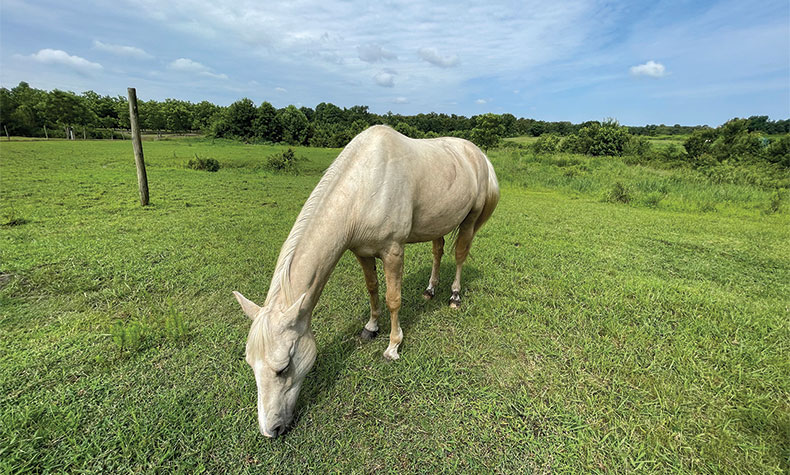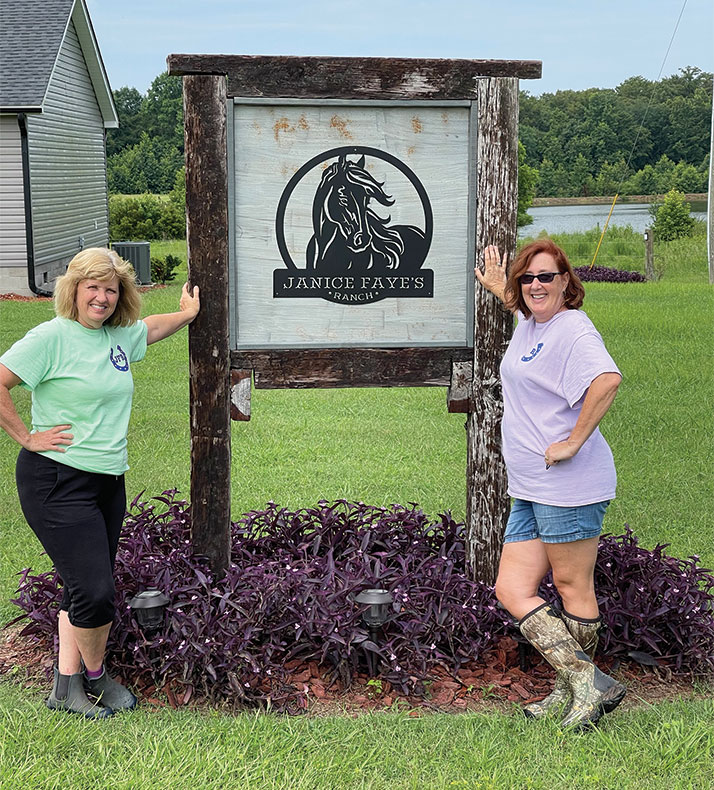Dixie
Breathe in, and as you breathe out, relax your shoulders,” said Kelli Adams, equine specialist at Janice Faye’s Ranch. “I could see your shoulders creeping up to your ears, how are you feeling?”
It’s about regulating control and brain energy, that’s one of the first things you learn at Janice Faye’s.
Founder Joy Canady built Janice Faye's Ranch, a Natural Lifemanship-centered non-profit organization, on 20 acres of property she inherited from her father in Clinton.
“Janice Faye’s Ranch was developed as the result of one family’s tragedy and heartbreak,” said Canady. “After watching a family friend be abused by another family member as a young child and feeling helpless, my mind goes back to the memories of growing up with horses and the soothing feeling I experienced while being around them.”
Canady and her husband were working to become licensed foster parents, and through the process, Canady realized the need for assisting traumatized children and their parents was even more evident. Thus, Janice Faye’s Ranch began, a tribute to Canady's mother.
The idea was there, but how could it become a reality? Canady had a friend who volunteered at an organization that used the Natural Lifemanship model.
"They helped with a lot of things that got us started here," said Canady. "When I learned about it from them, I felt like God said, I don't want to veer from this one - the Natural Lifemanship."
Natural Lifemanship promotes healing, recovery and positive development through the process of building connected relationships. This programming is what encouraged Canady to apply for an Operation Round Up grant for staff training.
There is no rush for anything to get done. Healing, like learning to be around horses, takes time.
"The Natural Lifemanship model is the only model where the horse isn't a tool," said Adams. "The horse is part of the process and a part of the team."
So,with a therapy selected, Canady set to work on everything else.
“I had the property, no horses, no fence, no volunteers,” said Canady. “I put in a prayer request at church.”
Adams, in turn, received an email about that prayer request. Having grown up on a horse farm in Vermont, Adams too, knew the soothing feeling of horses.
"I saw this email and I was looking for a way to get involved somewhere, I had done this work in South Carolina, at an organization I had gotten involved with in 2014," said Adams. "But we moved to Johnston County in 2018 after Hurricane Florence took our house."
She called and asked about the program, talked about her experience with Natural Lifemanship and the rest is history.
"Same thing with our therapist," said Canady. "Our licensed therapist went to our church and volunteered her time."
Canady reached out to the school guidance counselors and invited them out to the ranch. Several were interested in volunteering and others had students they thought might benefit from the program.
All volunteers must undergo a background check, as well as the Darkness to Light program, which empowers adults to prevent, recognize, and react responsibly to child sexual abuse through awareness, education, and stigma reduction.
Working with Believe Equine Rescue and Rehabilitation Center, the ranch acquired two horses, Paradise and Dixie.
Dixie was being treated for an infected foot and couldn't stand, while Paradise was an Amish horse being sent to slaughter. Both are now healthy participants in the program.
Now, with about 12 students, as well as some parents participating in sessions, the organization is working to help girls overcome trauma, as well as learning how to process it.
Sessions start with a devotional and a regulation period, which is a time where participants get calm and peaceful.
There is no rush for anything to get done. Healing, like learning to be around horses, takes time.
"When we first meet the horses, we just observe and it's up to the client as to when they start to go forward," said Adams.
"Sometimes it's up to the horse, and the horse will pick 'em and say hello. We take the time it takes, to take the time it takes."




